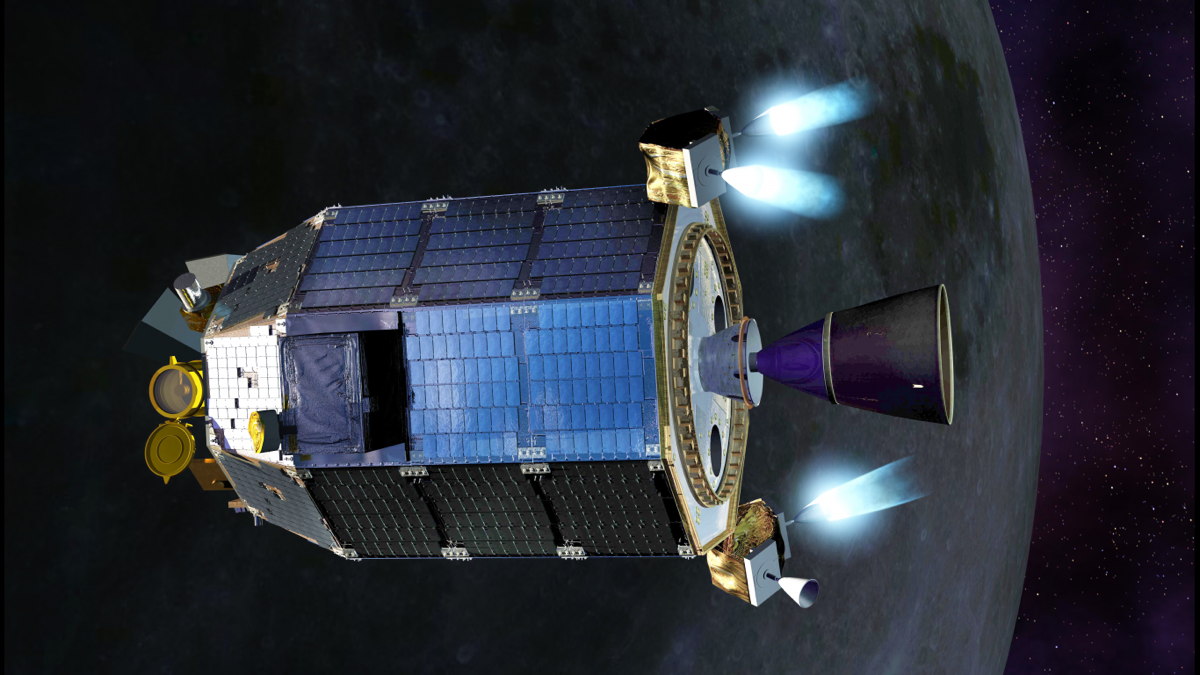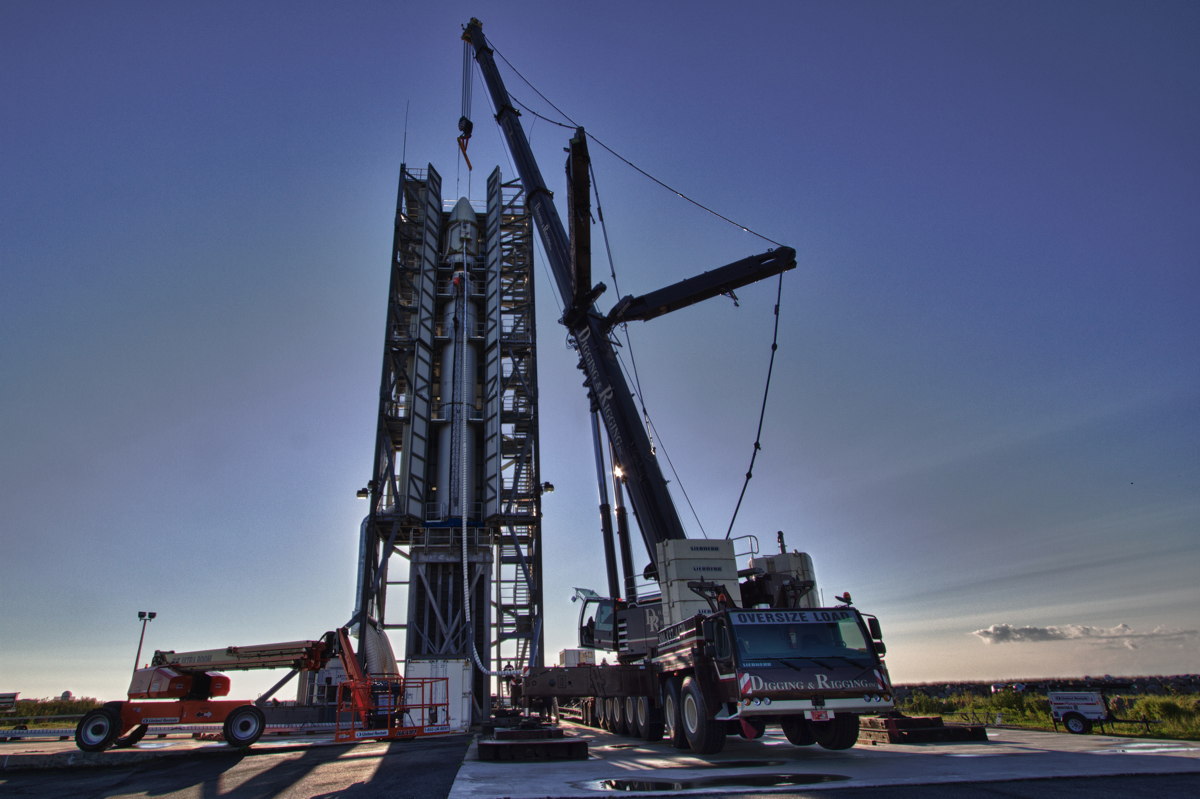NASA to Launch New Moon Probe This Week

NASA's next moon shot — a robotic spacecraft tasked with investigating lunar dust and the moon's thin atmosphere — is set to launch from Virginia this week.
The Lunar Atmosphere and Dust Environment Explorer (LADEE for short) is scheduled to start its journey to the moon on Friday (Sept. 6) at 11:27 p.m. EDT (0327 Sept. 7 GMT), launching atop a Minotaur 5 rocket, the maiden voyage for the new booster.
Weather permitting, the launch may be visible to observers along the East Coast of the United States when the rocket lifts off from NASA's Wallops Flight Facility on Wallops Island, Va. [Photos: NASA's LADEE Moon Dust Mission in Pictures]
"I love this mission. LADEE is going to be fantastic," John Grunsfeld, associate administrator for NASA's science mission directorate, told reporters in a briefing on Aug. 22. "I'm getting really excited as we move to the launch pad first of all because it's going to the moon. Ever since I was a young boy like so many folks looking up at the sky I've wondered about the moon."
LADEE — pronounced "laddie," not "lady" — will probe the lunar atmosphere for signs of moon dust that could have created a distinct glow on the moon's horizon that Apollo astronauts saw before sunrise. Scientists think that the mysterious luminosity could have been created by charged dust above the surface of the moon.
The LADEE spacecraft will also use its instrumentation to examine the thin atmosphere of the moon, called a surface boundary exosphere. Many moons, plants and some large asteroids all have this kind of atmosphere making it the most common kind of atmosphere in the solar system, Sarah Noble, a LADEE program scientist said.
Investigating the moon's atmosphere could help scientists understand more about the nature of atmospheres on many other bodies in the solar system including the closest planet to the sun, Mercury.
Breaking space news, the latest updates on rocket launches, skywatching events and more!
"The interesting thing about Mercury is that we don't have any samples of Mercury's surface ..." Noble said. "On the moon, we actually already know what the rocks are at the surface, but [LADEE] will help to compare what is on the surface versus what is in the atmosphere on the moon. [This science] will actually help us work our way back to Mercury and understand the difference between what we're seeing in the atmosphere and what might be on the ground there. We're actually going to learn about Mercury even from this lunar mission."
Once launched, LADEE will take 30 days to make it into its final orbit around the moon. The probe could make it to the Earth's cosmic neighbor in less time, but it would use too much fuel getting there, mission scientists said.
Fuel on LADEE needs to be conserved in order to perform the 100 days of science scheduled for the spacecraft's mission. The probe will be put into a relatively low orbit and because the moon's gravity is lumpy, LADEE needs a significant amount of fuel to stay stable in its orbit.
Although this will be NASA's first moon shot from Virginia, it follows in a long line of probes sent to the moon by the space agency.
"With the Lunar Reconnaissance Orbiter — which is still in orbit around the moon — we've learned an enormous amount about the surface of the moon," Grunsfeld said. "With GRAIL we studied the interior of the moon, and now with LADEE we're going to learn about the moon's atmosphere which is something very mysterious and we know very little about. This is a particularly exciting mission for us."
Follow Miriam Kramer @mirikramer and Google+. Follow us @Spacedotcom, Facebook and Google+. Original article on SPACE.com.

Miriam Kramer joined Space.com as a Staff Writer in December 2012. Since then, she has floated in weightlessness on a zero-gravity flight, felt the pull of 4-Gs in a trainer aircraft and watched rockets soar into space from Florida and Virginia. She also served as Space.com's lead space entertainment reporter, and enjoys all aspects of space news, astronomy and commercial spaceflight. Miriam has also presented space stories during live interviews with Fox News and other TV and radio outlets. She originally hails from Knoxville, Tennessee where she and her family would take trips to dark spots on the outskirts of town to watch meteor showers every year. She loves to travel and one day hopes to see the northern lights in person. Miriam is currently a space reporter with Axios, writing the Axios Space newsletter. You can follow Miriam on Twitter.


